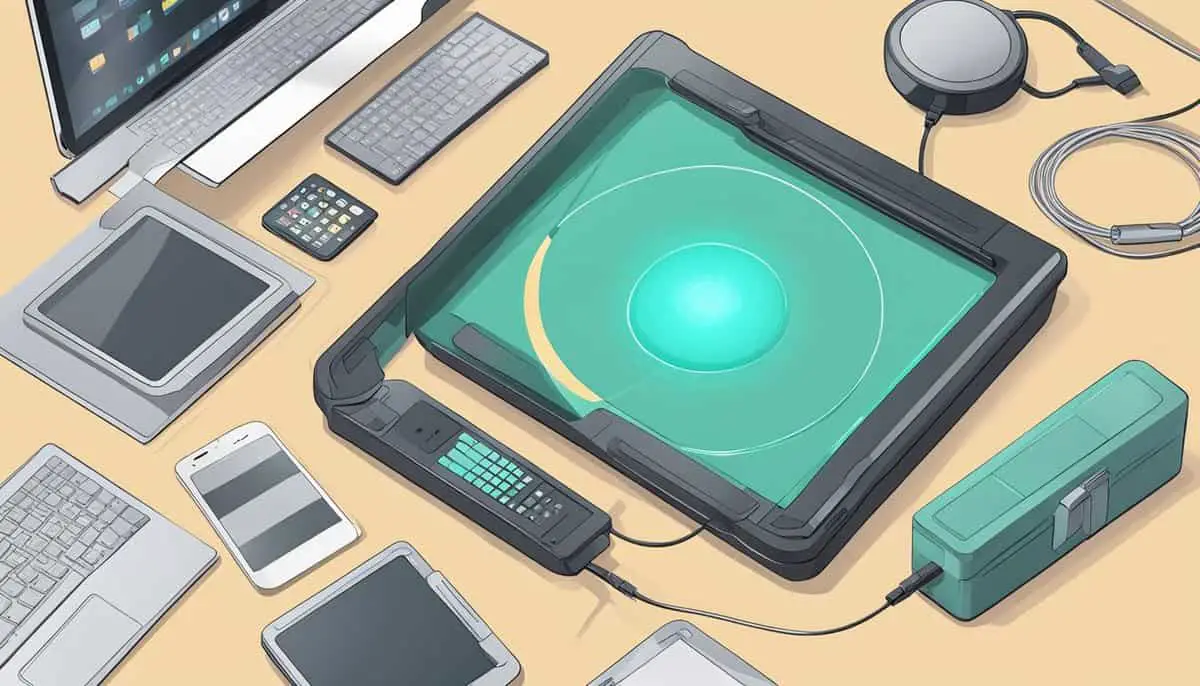Unboxing a new device is always exciting, but taking the right steps to set it up is crucial to get the best experience. The most important step is to insert your SIM card and power on your device. After that, you’ll choose your language and connect to a Wi-Fi network. These initial setups ensure you can start using your phone immediately.

You’ll need to configure essential settings to secure your device and personalize your experience. This includes setting up a Google account, enabling security features like fingerprint identification, and customizing your home screen. These steps not only make your device more secure but also more tailored to your preferences.
Syncing your device with your old phone is another crucial step. It helps transfer contacts, photos, and apps so you don’t lose any important data. Keeping your device updated with the latest software ensures smooth performance and access to new features.
Key Takeaways
- Insert your SIM card and power on your device.
- Set up security features and customize settings.
- Sync and update your device to keep it running smoothly.
Getting Started with Your New Device
Getting your new device up and running involves a few key steps, from unboxing to configuring initial settings. Let’s walk through some critical actions you’ll need to take to set up your new Android phone efficiently.
Unboxing and Physical Setup
First, open the packaging and take out your new phone. The box usually contains the phone, a USB-C cable, a charger, a SIM tool, and sometimes headphones or other accessories. Check that you have all the items.
Next, locate the SIM card tray on the side of the phone. Use the SIM tool provided to open the tray. If you’re using a nano SIM card, insert it into the tray. For devices with an eSIM, you’ll often find setup options during the initial configuration.
Make sure to plug in your phone using the USB-C cable and charger included in the packaging. Give it some time to charge, especially if the battery is low. This will allow you to complete the setup without interruptions.
Keep the packaging, as it may contain important documentation or warranty info. It’s also helpful for future reference or if you need to return the device.
Powering On and Initial Settings
Press and hold the power button until the screen lights up. The first thing you’ll see is a welcome screen where you can select your language. Adjust your preferences and then tap “Get Started.”
Connect to a Wi-Fi network to avoid using mobile data during the setup. You’ll need to enter your network password if it’s secured. After connecting, you’ll be prompted to sign in with your Google account. If you don’t have one, you’ll need to create it.
Set up a screen lock by choosing from options like PIN, pattern, or fingerprint. This will help secure your device. Follow the prompts to set up account recovery options, like adding a contact or setting up security questions.
By following these steps, you’ll have your new Android phone ready to use in no time.
Essential Configuration
Setting up your new device right the first time can save you a lot of hassle later. You’ll need to connect to Wi-Fi, set up user accounts, and configure language and accessibility options.
Connecting to Wi-Fi
First, connect your device to a Wi-Fi network. On most devices, go to Settings and look for the Wi-Fi option. Make sure it’s turned on. You’ll see a list of available networks. Select your Wi-Fi network and enter the password. If you’re on an Android phone, you might need to hold the network name and tap Connect.
If you’re setting up a Windows laptop, similar steps apply. Look for the Wi-Fi icon in the taskbar and click on it. Choose your network and type in the Wi-Fi password.
Setting Up User Accounts
Setting up user accounts ensures that everyone using the device has their own space and settings. If you’re setting up an Android phone or tablet, you might want to log in with a Google Account. Go to Settings, then Accounts, and choose Add Account. Follow the prompts to sign in.
For iPhones, it’s usually about setting up or logging into an Apple ID. Go to Settings and tap your name at the top. If you’re setting up a Windows laptop, you can add multiple accounts through the Settings > Accounts section.
Language and Accessibility
Choosing the right language and enabling accessibility features can make your device easier to use. When you first turn on your device, you’re usually asked to choose a language. Scroll through the list, pick your language, and confirm.
For accessibility, go to Settings > Accessibility. You can adjust text size, enable screen readers, and more. These features are especially useful if you have vision or hearing impairments. On both Android and iPhone devices, you’ll find options under Accessibility in the settings menu to tailor the experience to your needs.
Securing Your Device

Keeping your new device safe from unauthorized access is crucial. Make sure to set up a secure lock screen, enable device encryption, and use biometric authentication to maximize security and privacy.
Creating a Secure Lock Screen
A secure lock screen is your first line of defense. Always use a strong PIN or password. Simple ones like “1234” are easy to guess. Aim for a mix of numbers, letters, and special characters. This makes it tougher for others to crack.
Don’t disable your lock screen. If your device gets lost or stolen, anyone can access your data. Using a lock screen keeps your private information safe.
Make sure to adjust the screen timeout. A short timeout ensures your device locks quickly after use.
Enabling Device Encryption
Device encryption scrambles your data so it’s unreadable without the correct key. This is especially important if your device falls into the wrong hands. Most newer devices have encryption built-in, but you might need to enable it manually.
On Android, go to Settings > Security > Encrypt phone. Follow the prompts to encrypt your device. For iPhones, encryption is enabled by default when you set a strong passcode.
Encryption adds an extra layer of security, making it harder for anyone to access your information without your password or PIN.
Setting Up Biometric Authentication
Biometric authentication uses your unique physical features to unlock your device. This can include a fingerprint scanner or face unlock. It’s fast and convenient, and provides extra security.
Set up fingerprint unlock by going to your device settings. For Android, look under Security > Fingerprint. For iPhones, go to Settings > Touch ID & Passcode. Follow the steps to add your fingerprints.
Face unlock is another option. It uses facial recognition to verify your identity. This feature is usually found in the same security settings as fingerprint scanning.
Biometrics add an extra layer of protection, as they are harder to replicate than a simple password or PIN.
Personalizing Your Experience

Personalizing your device helps make it truly yours. You can change the home screen, manage notifications, and adjust sounds to fit your needs and preferences.
Customizing the Home Screen
The home screen is the first thing you see when you unlock your device. Making it work for you involves setting up wallpapers, widgets, and app icons.
Start by choosing a wallpaper that you love. It can be a photo, a design, or even a live image. Just go to Settings > Wallpaper and pick your favorite.
Next, add some widgets. Widgets give you quick info at a glance. You might add a clock, weather, or calendar widget. Just press and hold on an empty part of the home screen, select Widgets, and drag them where you want.
Arrange your app icons in a way that makes sense to you. Group your most-used apps on the main screen or create folders for similar apps like social media or games.
Managing Notifications and Apps
Notifications keep you up-to-date, but too many can be overwhelming. Managing them helps you stay focused.
First, decide which apps you want notifications from. Open Settings > Notifications and you can toggle notifications on or off for each app.
Set the priority level for different notifications. Important alerts can be marked as high priority so they show up first.
Organize your app list for easy access. Uninstall apps you don’t use by going to Settings > Apps > App List, then selecting the app and tapping Uninstall.
Adjusting Ringtones and Sound Settings
The right sound settings can make a big difference in how you use your device. Start with ringtones. Go to Settings > Sound > Phone Ringtone and choose one that you like.
Adjust the notification sounds for different apps. You might want a different sound for email compared to text messages. Go to the specific app’s settings to change its notification sound.
Control the volume levels for different types of sounds. You can set different levels for ringtones, media, and alarms. Go to Settings > Sound and use the sliders to adjust each one.
By personalizing these settings, you make sure your device works exactly how you want it to.
Syncing and Updates

Syncing and updating your new Android device ensures everything runs smoothly and that you can access your important data and contacts. This includes syncing data, downloading key apps, and keeping the system up to date through essential updates.
Syncing Your Data and Contacts
To get started, sync your contacts and other data with Google Services. Go to “Settings,” then “Accounts,” and finally “Add account.” Choose “Google” and sign in with your Google account. This will sync your Contacts, Photos, Videos, and other data from Google Drive and Google Photos.
For extra security, enable the Backup service. This automatically saves your device settings, app data, and more to Google Drive. If you’re switching from an iPhone, you can use the “Switch to Android” app to transfer data.
Downloading Essential Apps
Head over to the Google Play Store to download essential apps. First, install apps you frequently use like social media, email, and messaging apps. If you’re a heavy user, get utility apps like calendar, weather, and note-taking apps.
For productivity, download apps like Google Drive, Google Docs, Sheets, and Slides. These are particularly useful for accessing and editing documents on the go. Don’t forget to download security apps to keep your device safe from malware.
Keeping Your Device Up to Date
System updates are crucial for maintaining your device’s performance and security. Go to “Settings,” then “System,” and tap “System Update.” Your device will check for available updates. Install any available updates to get the latest security patches and software improvements.
For app updates, go to the Google Play Store. Tap on your profile icon, then “Manage apps & devices,” and finally “Update all” to ensure all apps are running their latest versions. Keeping everything updated helps fix bugs and improves overall performance.
By following these steps, you’ll ensure your new Android device is synchronized, secure, and ready to use.

